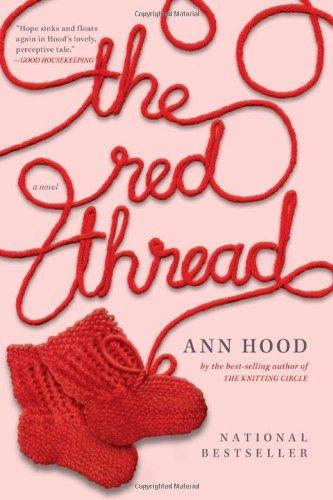
THE RED THREAD
In 2005, three years after our five-year-old daughter, Grace, died suddenly from a virulent form of strep, my husband, Lorne, our eleven-year-old son, Sam, and I found ourselves on a plane heading to China to adopt a baby girl. Our journey into adoption came from a belief that, even in such heartbreak and despair, we could love again. As soon as they placed eleven-month-old Annabelle in my arms, I knew that our hope of rebuilding our family again was indeed possible.
During the adoption process—the orientation, the miles of paperwork, the home visits, the long waits at the INS,
In 2005, three years after our five-year-old daughter, Grace, died suddenly from a virulent form of strep, my husband, Lorne, our eleven-year-old son, Sam, and I found ourselves on a plane heading to China to adopt a baby girl. Our journey into adoption came from a belief that, even in such heartbreak and despair, we could love again. As soon as they placed eleven-month-old Annabelle in my arms, I knew that our hope of rebuilding our family again was indeed possible.
During the adoption process—the orientation, the miles of paperwork, the home visits, the long waits at the INS, and then the even longer wait for our referral from China—we met many other families and heard their own stories about what led them to fly halfway around the world to bring home a baby. Like ours, their stories were all unique, filled with disappointment and promise, despair and hope.
But just as compelling were the stories we heard about the mothers in China who, due to the one-child policy there, were forced to abandon their baby girls. Annabelle was found early on a September morning in a box at the orphanage door in the city of Loudi in the province of Hunan. We will never know the story of who left her there, or under what circumstances. Usually, the babies are left right after birth, often with the umbilical cord stump still attached. Annabelle was slightly older, around five months. It is possible that her story is slightly different. Perhaps her mother died. Perhaps her family tried to hide her—a second daughter?—and was discovered. Perhaps, perhaps, perhaps.
As a writer and as her mom, Annabelle’s secret history fascinated me. When I began to write a new novel, I wanted to capture the emotional journey of couples embarking on adoption. But I also wanted to explore the brave women who abandon their children in the hope of giving them a better life.
The Red Thread is the story of six couples adopting babies from China. It is also the story of Maya, who runs the adoption agency after losing her baby daughter. And it is the story of six women in China who are forced to give up the baby girls they love. The Chinese legend of the red thread is that our children are connected to us by an invisible red thread. No matter how tangled or frayed it becomes, our child is waiting for us at the other end. Who is at the end of your red thread? Maya asks each couple. In The Red Thread, I imagine that magical, enduring connection.
- W.W. Norton & Company, Inc
- Hardcover
- May 2010
- 304 Pages
- 9780393070200
About Ann Hood
Ann Hood is the author of ten books, including “An Ornithologist’s Guide to Life,” “The Knitting Circle,” “Comfort,” and “The Red Thread.” Her work has appeared in The Paris Review, Tin House, O, The Oprah Magazine , and elsewhere. She lives in Providence, Rhode Island.
Praise
“Hood’s sensitive depiction of her characters hopes and fears makes for a moving story of dedication, forgiveness, and love.”
—Publishers Weekly
“Hood’s moving novel…ends with a pleasing sense that the red thread is more than a myth“—Kirkus Review
“An altogether entertaining read”—Booklist
“The Red Thread is a work of aching beauty and indelible grace. A novel that elicits nothing less than wonder.”—Dennis Lehane
Discussion Questions
Describe how each of the characters reacts to the idea of adoption. How are they similar? What makes them different?
How does Maya deal with the loss of her daughter? How does her reaction affect her relationships with and opinions of others?
How does Maya’s confession to Jack change her interactions with the people around her, particularly her coworkers?
Flowers are a prominent motif throughout The Red Thread. Discuss the significance of this.
Many of the characters have habits that help them cope through tough situations. How do these habits help or hinder them?
Compare and contrast the American couples to their Chinese counterparts.
A red thread is said to connect mother to child. Do you think there is also a connection between the expectant mothers at the Red Thread Adoption Agency?
What do you think about Brooke’s decision? How do you think this decision will affect her in the future? Does it change the way you view the rest of the characters?
Compare and contrast the babies’ Chinese names and their new American ones. How do the names fulfill the hopes and dreams of the mothers, both Chinese and American?
How do you think the new parents will deal with the ethnic differences between themselves and their children? What types of things should they do to integrate themselves with their child’s Chinese heritage?
What do you think will happen to each of the couples after the novel ends?
